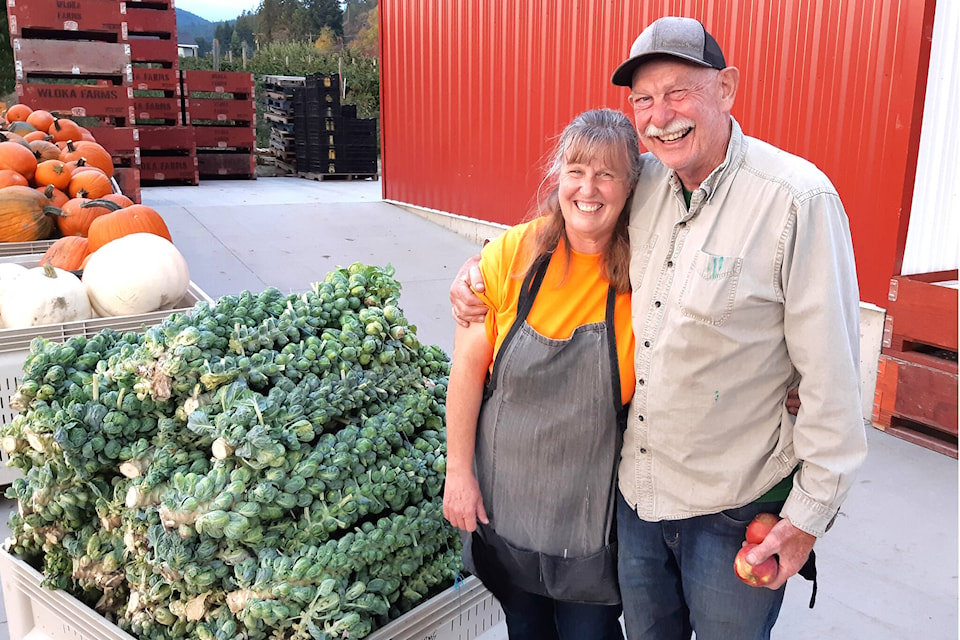By Barb Wloka
There are many variables to be considered when planning the 40 acres of gardens to supply the fruit stand.
It’s important to look at what has been planted previously. For instance, tomatoes should not follow a pea planting. The soil will have too much nitrogen, so the tomato plants grow beautifully, but will not produce a lot of fruit.
Other things to consider are the field dimensions (different machinery requires space to turn around at the ends of rows), frost susceptibility (plan items which will be harvested early where an early frost may occur), harvest order (nothing worse than having a field harvested except for one row in the middle of it), weed control (a new field is far more likely to produce weeds than one which has been worked for several years), sun exposure (melons love a south facing field), ease of harvest (hot peppers and sweet peppers are in completely different fields – far less chance of them being mixed while being harvested), irrigation required (overhead sprinklers or drip tape under the mulch) and on and on it goes.
To determine quantity of each product, records from previous years are examined as to what sold well and what didn’t, and then plant numbers are adjusted up or down accordingly. New varieties are given a small planting just as a trial. For example, 200 plants of a new winter squash rather than 500. Many of the products require staggered starts (an example being the cole crops – cabbages, kohlrabi, broccoli, cauliflower) so that fresh produce is being harvested for the fruit stand all season long. Once the numbers and dates have been decided, seeds have to be sorted and delivered to local greenhouses with directions to fulfill the plans which have been made.
Planning also includes deciding which items will be planted in raised beds and which will seeded directly into the soil. The mulch (that black, plastic looking material you see in the fields) to cover the raised beds must be ordered well prior to the season – when the weather is right, we cannot be waiting for mulch to arrive! The mulch is produced by FilmOrganics and looks and feels much like the old plastic mulch. However, it is made of organic material and simply requires discing into the soil for it to breakdown to nothing. The upfront cost is more than the traditional plastic mulches but the savings on clean up are huge. Additionally, pulling plastic from the fields in the fall is one of the worst jobs – it is cold, wet, dirty work and is never completed. This used to mean sending crews into the fields in the spring to clean up the plastic, yet again, prior to any planting being done. All that has been eradicated with the FilmOrganic product. This is good for the soil, plus it eliminates a huge amount of garbage from going to the landfill – about 3,000 pounds per year!
Finally, tracking all this cannot be stressed enough. Making a plan, mapping the actual plantings, and being flexible is one of the most important jobs of the season.
Barb Wloka is owner/operator of Wloka Farms Fruit Stand in Creston, B.C. She and her husband, Frank, have farmed for over 40 years and have learned a lot through trial and error. To grow their knowledge base, both continually research and collaborate with others. They also pick up tidbits of information from staff and customers. Learning to farm is a life-long educational experience!
READ MORE: For the love of the harvest: The history of Wloka Farms Fruit Stand
